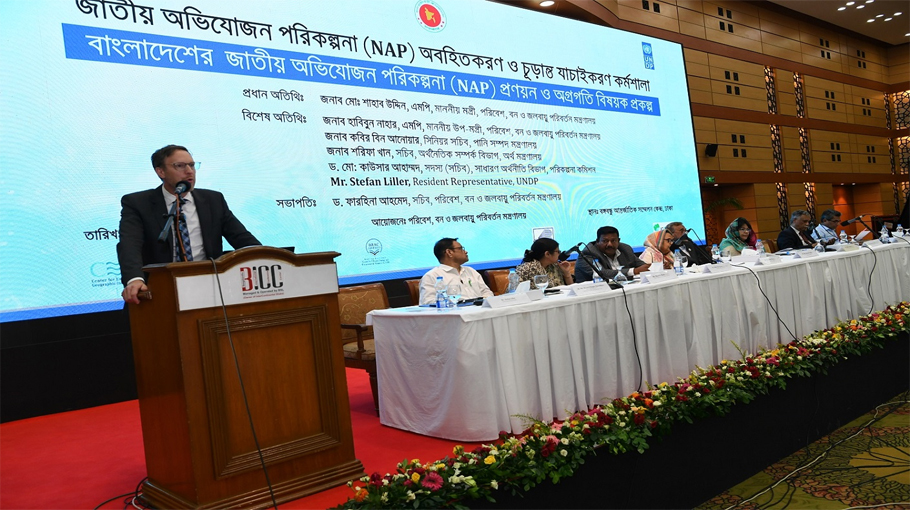National Adaptation Plan for climate resilience

The government has adapted the USD 230 billion National Adaptation Plan (NAP) which envisions building a climate-resilient nation through effective adaptation strategies that foster a robust society and ecosystems and stimulate sustainable economic growth.
The plan primarily encompasses eight distinct sectors: water resources; disaster; social safety and security; agriculture; fisheries, aquaculture, and livestock; urban areas; ecosystems, wetlands, and biodiversity; policies and institutions; and capacity development, research, and innovation, according to an official document.
Total financing requirement to implement the NAP amounts to USD 230 billion, 72.5 percent of which is proposed to be mobilised by 2040.
As per the document, the NAP implementation will seek to realise six goals through 23 broad-scale strategies and 28 outcomes encompassing diverse aspects of safeguarding against climate- induced disasters.
It will develop climate-resilient agriculture, infrastructure, and other socioeconomic sectors through implementing inclusive and ecosystem-based adaptation, improved governance, enhanced climate finance and transformative capacity-building, and innovation.
The NAP considered 11 climate stress areas in devising 113 interventions based on developed adaptation pathways and sectoral adaptation requirements.
These interventions are aligned with the global Sustainable Development Goals (SDGs) and 52 climate adaptation projects of the Bangladesh Delta Plan 2100 (BDP2100).
They ensure the inclusion of women and people with diverse gender identities, the elderly, persons with disabilities, youth, ethnic communities, and other socially disadvantaged groups throughout the NAP process.
As per the document, Bangladesh is high on the list of countries most vulnerable to climate change, ranking seventh on the 2021 World Climate Risk Index.
Keeping this in mind, over the decades, Bangladesh has advanced substantially in building adaptive capacity and resilience through the formulation and implementation of required policies and regulatory frameworks for enabling climate-resilient sustainable development.
The government has adopted the NAP in October 2022 to be implemented during a time span of 27 years to 2050. Bangladesh also submitted an updated NDC in August 2021.
Now the government is updating the Bangladesh Climate Change Strategy and Action Plan (BCCSAP, 2009) making it aligned with the NAP and updated NDC.
Furthermore, the Mujib Climate Prosperity Plan (MCPP) was launched during Bangladesh’s second tenure as president of the Climate Vulnerable Forum (CVF).
The plan aims to ensure that Bangladesh’s development trajectory evolves from vulnerability to resilience to prosperity (VRP).
Under the MCPP, Bangladesh intends to obtain 30 percent of energy from renewables by 2030.
Under the updated NDC, the targeted reduction of GHG emissions by Bangladesh will be implemented through a set of mitigation actions, including implementation of renewable energy projects, enhanced efficiency of existing power plants, use of improved technology for power generation, improvement of fuel efficiency for transport sub-sector, increasing energy efficiency in the industry sub-sectors, and enhanced use of solar energy in agriculture, etc.
There will be improved technology used in brick kilns and enhanced use of energy-efficient appliances in household and commercial buildings. Besides, there will be a focus on the reduction of emissions from rice fields, fertiliser uses, enteric fermentation etc.
Furthermore, the document stated that prevention of deforestation, reforestation/afforestation, improved municipal solid waste management, and use of the 3R principle for waste management are emphasised.




